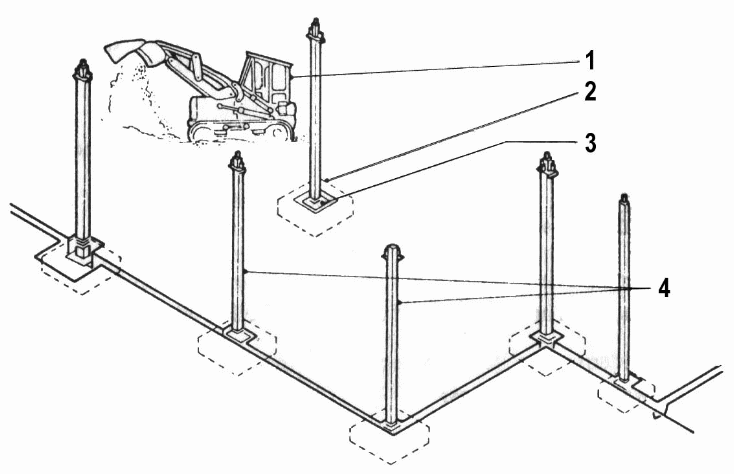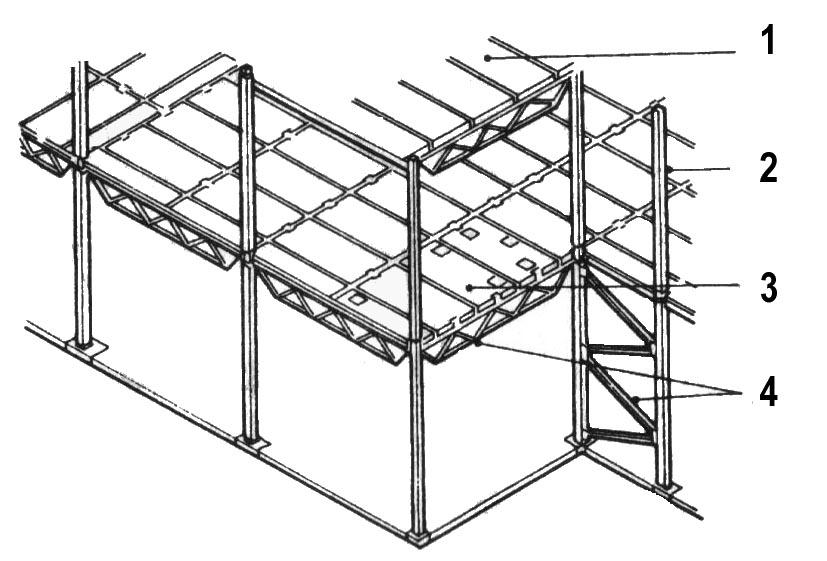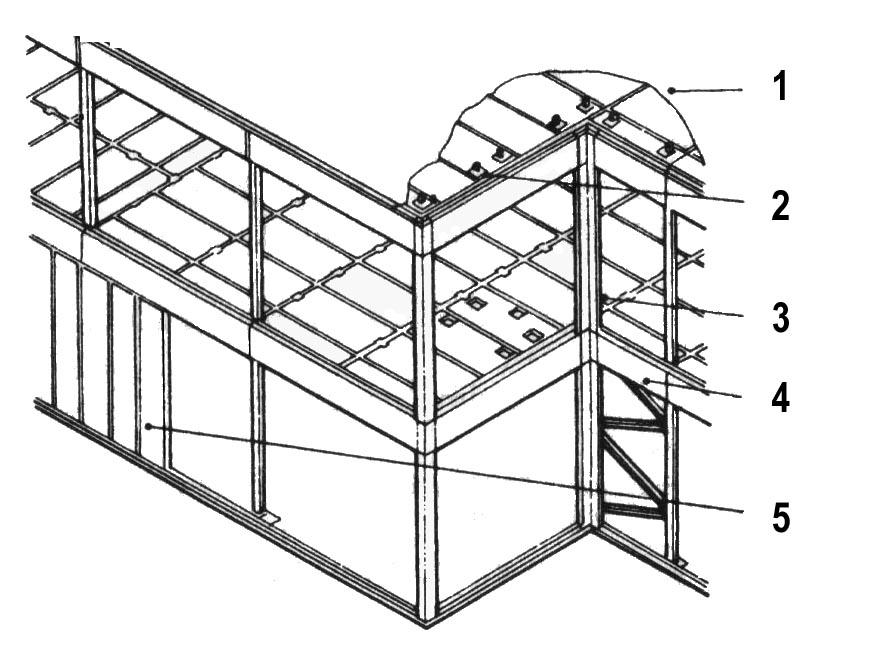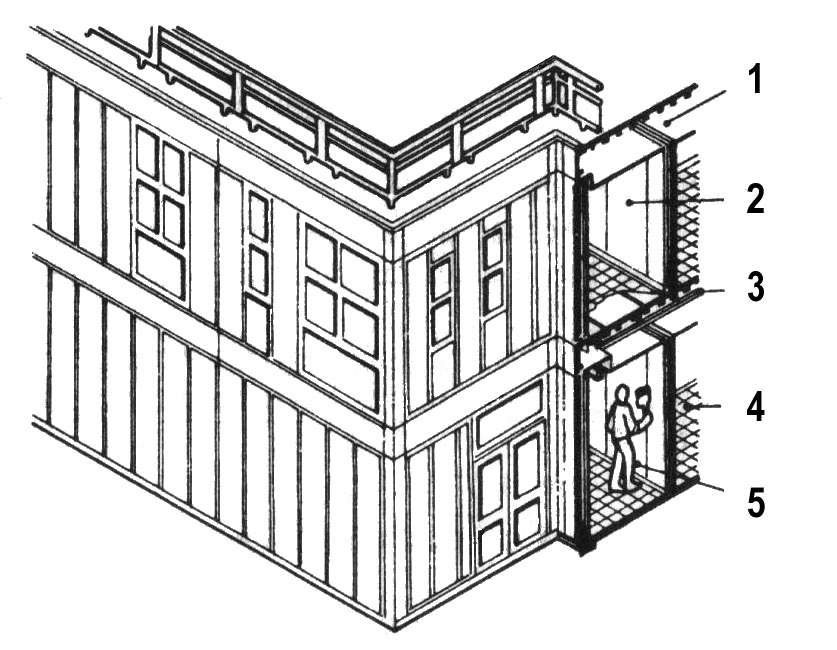
- •Министерство образования и науки российской федерации
- •Contents
- •Unit 1. Building Construction…………………………………………... 5
- •Introduction
- •Unit 1 Building Construction
- •New words:
- •Unit 2 elements of buildings
- •New words:
- •Elements of buildings
- •Unit 3 foundations
- •New words:
- •Foundations
- •Caissons
- •Unit 4 floors
- •New words:
- •Beams and their types
- •New words:
- •Beams and their types
- •Lightweight steel beams and joists introduced
- •Unit 6 shells, trusses and space frames
- •New words:
- •Shells, trusses and space frames
- •Identify the type of the given trusses. Explain the difference between the Pratt and the Warren truss systems.
- •Unit 7 Roofs
- •New words:
- •Aluminium roofs for reservoirs and storage tanks
- •New words:
- •Towards Industrialized Construction
- •Interview your partner about the reasons of moving building construction towards industrialization. Use the following words and expressions.
- •From the history of building construction
- •Assembly works and time-tabling
- •New words:
- •Assembly works and time-tabling
- •Identify each kind of assembly works.
- •Identify the part of the building or the phase of the assembly sequence described in the sentences.
- •References
Identify each kind of assembly works.

Erection of steel columns
Construction of concrete foundations
Ground excavation
Fixing column base plates

Putting concrete floor slabs into place
Erection of upper floor steel columns
Putting roof decking into place
Fixing beams and bracing

Fixing vertical cladding panels
Fixing balustrade plates
Laying weatherproof roof membrane
Erection of corner units
Fixing horizontal cladding panels

Laying floor finishes
Erection of partitions
Decoration of a building
Installing services in the ceiling void
Fixing suspended ceilings
Identify the part of the building or the phase of the assembly sequence described in the sentences.
Before fixing this, the workmen erect the corner units.
During this phase the beams and bracing are fixed.
The workmen fix these after constructing the concrete foundations.
The electric wiring is installed during this phase.
This can not be put in place until the upper floor steel columns have been erected.
When the balustrade fixing plates have been fixed, the workmen can start laying this.
Answer the questions to the text.
How many phases do the assembly works consist of?
What actions constitute the first phase?
When do the machine drivers start excavating?
Why are the column base plates fixed before the steel columns erected?
What actions constitute the second phase?
Why are the concrete floors put in place after the beams have been fixed?
What actions constitute the third phase?
Why are the horizontal cladding panels fixed before the vertical cladding panels?
Name the works needed at the last stage of construction.
Why are the partitions fixed after the suspended ceilings have been erected?
Retell the sequences of assembly works according to this plan.
The builders start with …
Then they erect …
During the third phase they …
The last stage includes…
Give the names of the persons who:
supervises the labourers on site;
excavates the ground;
erects the steel frame;
builds the brick cladding;
lays the roof covering;
installs the heating elements;
installs the electrical services.
Complete these sentences with the name of a building trade.
a) The … finish just before the plumbers start.
b) The … should finish by the end of week 40.
c) The … work until the end of week 30.
d) The … work up to the end of week 50.
e) The … should finish no later than the end of week 8.
Using the bar chart make up as many sentences as possible according to the model.
Model: As soon as the machine drivers have finished, the steel erectors begin.
From week 13 to the end of week 15 steel erectors work at the same time
as the bricklayers.
a) Read this information.
During building construction, several things went wrong so there are several changes to be made to the bar chart in exercise 5. Here is a description of what happened: Excavation was delayed for two weeks because the excavator broke down. Therefore the machine drivers could not start work until week 3. As the steel erectors had to wait until the machine drivers had completed their work, they were also delayed by two weeks. Consequently, the cladding fixers could not start until week 17. Bricks were in short supply during weeks 15 to 20 and this resulted in the bricklayers working three weeks longer than expected. So the plumbers and the roofing contractor started three weeks later. In week 30 the joiners went on strike which was settled after one week. However, this meant both the carpenters and the glaziers started one week late. The wrong paint was delivered to the decorators, which delayed them by one, week, but by putting on extra men the building was completed on schedule.
b) Now draw a new bar chart using the information in the passage.
Make a list of other things that could go wrong on a building site. Say when they might occur and how they could affect the time schedule.
